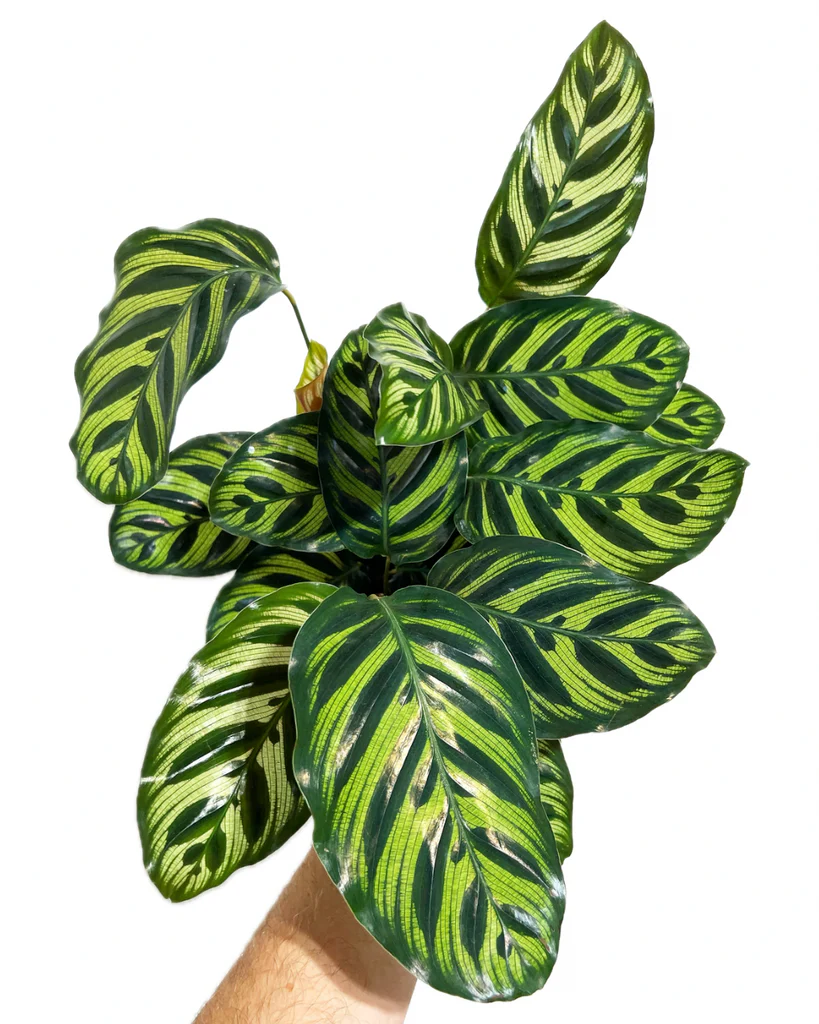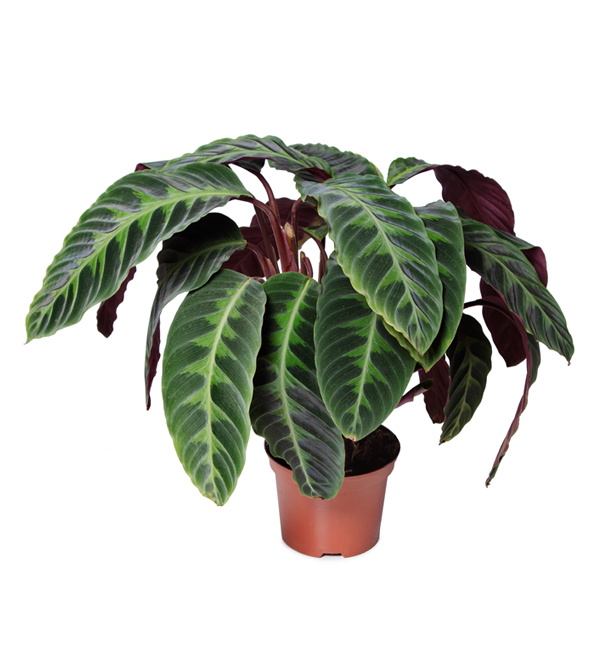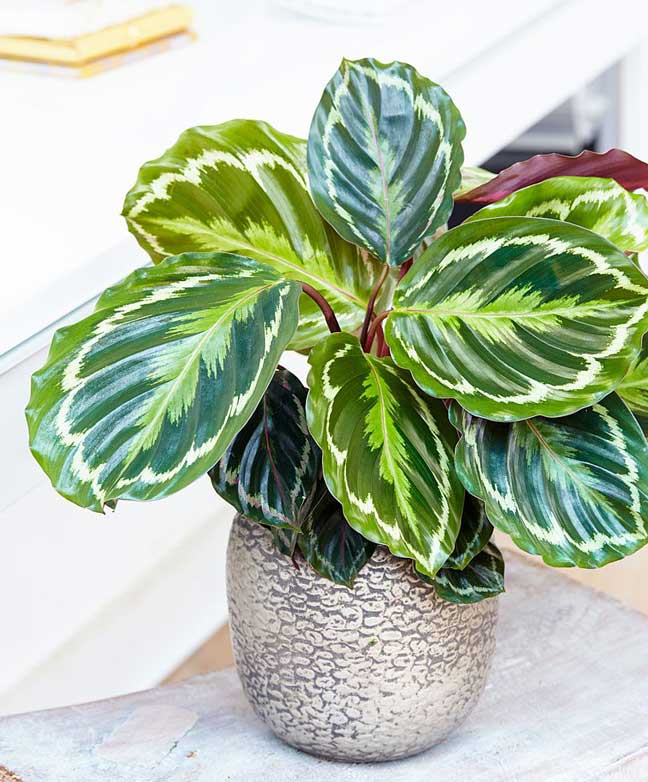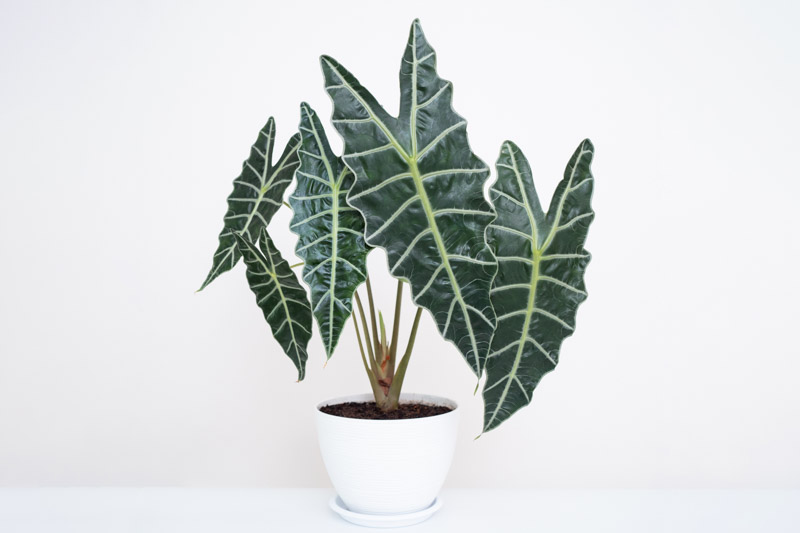Calathea makoyana
Introduction Among the many varieties of indoor houseplants, few are as eye-catching and elegant as Calathea makoyana, commonly known as the Peacock Plant. Native to the tropical forests of Brazil, this stunning plant has earned its place in homes and collections around the world for its unique foliage. The lush, oval-shaped leaves, marked with deep green patterns over pale green backgrounds and a touch of purplish undersides, resemble a peacock’s feathers—hence the name. While enchanting, the Peacock Plant does come with a bit of a reputation for being “fussy.” But don’t worry—once you understand its specific care needs, Calathea makoyana can become a long-lasting, evergreen addition to your indoor jungle. In this guide, we’ll explore its origins, characteristics, and detailed care tips that cater to beginners and indoor plant enthusiasts alike. Understanding Calathea makoyana Calathea makoyana belongs to the Marantaceae family, a group of plants often admired for their intricate leaf patterns and rhythmic movements. Like other prayer plants, its leaves perform a daily dance, folding upward at night and unfurling in the morning, a fascinating phenomenon known as nyctinasty. Here are a few key attributes that make Calathea makoyana so beloved: Foliage: Oval leaves with dark green, feather-like patterns on a pale green canvas; undersides are deep reddish-purple. Height: Typically grows up to 2 feet indoors. Growth Habit: Bushy and upright; can spread outward if kept healthy. Pet Friendly: Non-toxic to cats and dogs, making it a safe choice for homes with pets. Light Requirements Calatheas thrive in bright, indirect light. This plant is native to the shaded forest floor, so it’s not used to direct sun. Too much sunlight will bleach its beautiful patterns and can scorch the leaves. On the other hand, too little light can cause slow growth and dull leaf coloration. Tips for optimal lighting: Place your Calathea near an east-facing window for soft, morning light. If placed near a south or west-facing window, use sheer curtains to filter the light. Avoid direct sun exposure at all costs. Watering and Humidity This is where many plant parents struggle. Calathea makoyana demands just the right amount of moisture—its roots should never completely dry out, yet soggy soil can lead to root rot. Water preferences make sense when you consider its tropical origins. Watering Guidelines: Water when the top inch of the soil feels dry to the touch. Use filtered or distilled water if possible. Tap water with high fluoride or chlorine can cause brown leaf edges. Water more frequently during the growing season (spring and summer), and reduce in the dormant months (fall and winter). Humidity Preferences: Calathea makoyana absolutely loves humidity—think rainforest levels of 60% or higher. Use a humidifier to maintain humidity around your plant, especially during winter. Group plants together to create a microclimate that retains more moisture. Place the pot on a pebble tray filled with water—but make sure the base of the pot isn’t submerged. Soil and Repotting Calatheas prefer a well-draining, rich potting mix that retains moisture without becoming soggy. A good mix promotes healthy root development and prevents fungal problems. Recommended Soil Mixture: 2 parts peat moss or coco coir 1 part perlite 1 part orchid bark or coarse sand for aeration Repotting should be done every 1–2 years or when the plant becomes root-bound. Always choose a pot that’s one or two inches larger in diameter than the current one, with drainage holes to prevent excess moisture buildup. Feeding and Fertilizing During the active growing season, typically from spring to early fall, Calathea makoyana appreciates regular feeding. However, it’s a light feeder, so less is more. Use a balanced, water-soluble houseplant fertilizer diluted to half strength. Feed once a month from March through September. Avoid over-fertilization; it can cause salt build-up and damage roots. In winter, when the plant goes semi-dormant, hold off on feeding to let it rest. Pruning and Maintenance This plant doesn’t require heavy pruning, but regular grooming keeps it looking its best and encourages healthy growth. Maintenance Tips: Snip off yellow or brown leaves at the base with clean, sharp scissors. Gently wipe down leaves with a damp cloth to remove dust and allow the plant to breathe better. Watch for leaf curling, browning edges, or fading patterns—they’re often signs of improper care. Pest and Problem Management Although not particularly prone to pests, Calatheas can occasionally attract unwanted visitors like spider mites, mealybugs, or aphids, especially when humidity is too low. Preventative Care: Inspect new plants before bringing them indoors. Wipe leaves regularly to discourage pest settlement. Maintain high humidity to make the environment less hospitable for mites. If Infested: Isolate the affected plant to prevent spreading. Treat with insecticidal soap or neem oil spray every 5–7 days until pests are gone. Propagation Unlike some other houseplants, Calathea makoyana is not propagated through leaf cuttings. Instead, the best method is root division, which should be done during repotting. Here’s how to do it: Remove the plant gently from its pot. Identify natural separations in the root system where a few stems and roots are grouped together. Use a clean knife to divide the root clumps. Plant each division into its own pot with fresh soil. Water lightly and keep the new divisions in a warm, humid environment until established. Conclusion Calathea makoyana can be a bit delicate, but it rewards attentive owners with vibrant color, unique leaf movement, and tropical charm. With just a bit of patience and the right conditions—filtered water, indirect light, and high humidity—you’ll be able to keep this Peacock Plant thriving year-round. Whether you’re new to houseplants or an experienced gardener looking to expand your collection, taking care of Calathea makoyana is a satisfying and rewarding experience. Remember: plants are living artworks, and the joy is not just in having them, but in learning their language. With Calathea makoyana, you’ll quickly become fluent in the dance of leaves and rhythm of care. References Chadwick, A., & Dalziel, L. (2008). The Royal Horticultural Society: Encyclopedia of House Plants. DK Publishing.










